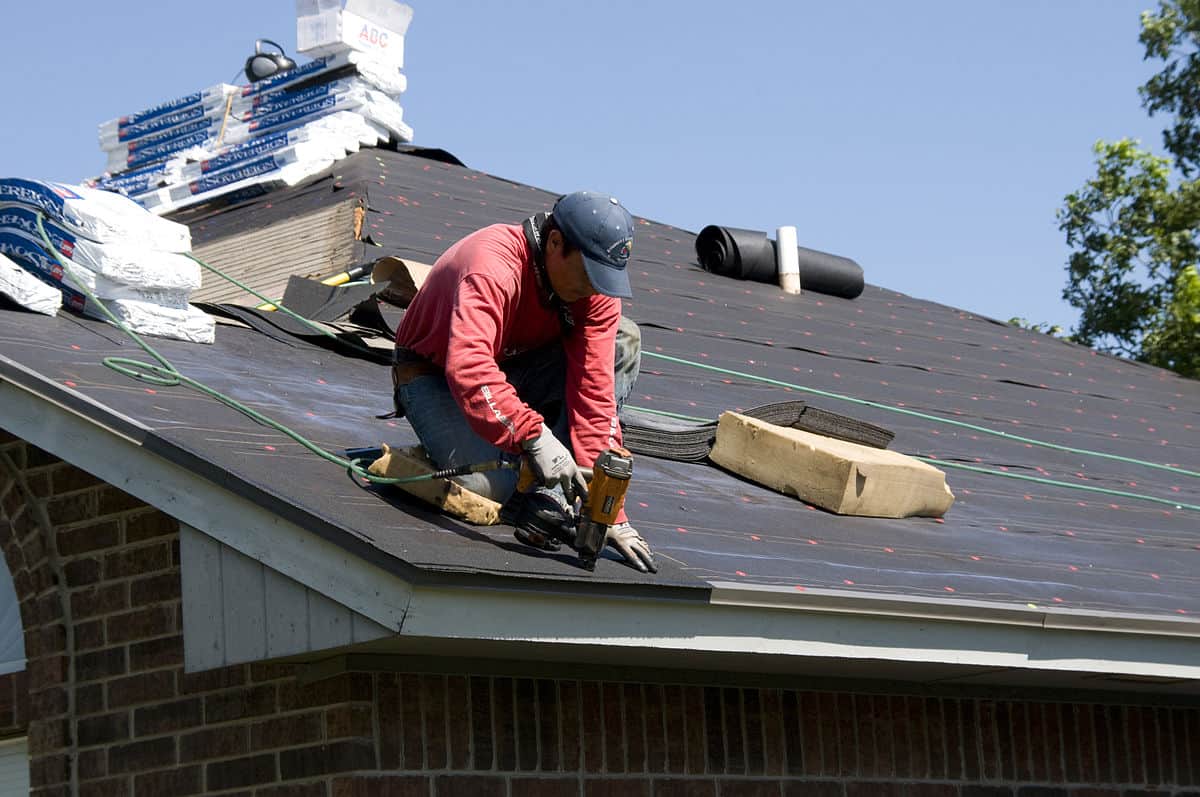Just How Gainesville Roofing Companies Can Transform Your Home's Outside
Just How Gainesville Roofing Companies Can Transform Your Home's Outside
Blog Article
Finest Practices for Ensuring Proper Roof Air Flow
A balanced intake and exhaust air vent proportion, generally 1:300, plays an essential duty, with intake vents preferably put at the lower edge of the roof covering for amazing air entrance and exhaust vents at the peak for warm air departure. Keeping insulation away from vents is essential to avoid air flow restriction.
Understand Air Flow Essentials
Appropriately understanding air flow essentials is vital for guaranteeing the long life and effectiveness of roof systems. Efficient air flow alleviates wetness buildup and temperature level extremes in the attic, both of which can cause substantial architectural damages gradually. A well-ventilated roof helps in preventing typical concerns such as mold and mildew growth, timber rot, and ice dams, which can endanger the integrity of the roof covering products and the underlying structures.
The key goal of air flow is to facilitate the activity of air, allowing for a regular exchange in between the indoor and outdoor settings. This equilibrium is accomplished through a combination of consumption and exhaust vents that collaborate to preserve optimum air flow. Intake vents, commonly located along the eaves or soffits, allow fresh air to enter the attic space, while exhaust vents, typically positioned at or near the roof ridge, make it possible for hot, humid air to escape.
Secret variables influencing the effectiveness of roofing system air flow consist of proper placement, ample sizing, and making certain that both intake and exhaust vents are unblocked. Routine inspection and maintenance are vital to identify potential clogs, damage, or inadequacies in the air flow system, thereby protecting the roof's performance and toughness.
Kinds Of Roofing System Vents
Roof covering vents play an important duty in preserving efficient attic room ventilation and, by extension, the overall health and wellness of the roofing system. Different kinds of roof vents are offered, each with special benefits customized to certain roofing needs.

Soffit vents are set up under the eaves and operate in tandem with roof covering vents to make certain a balanced consumption and exhaust system. By allowing cooler air to enter from below, soffit vents help with the expulsion of hot air through top vents. Gable vents, situated on the exterior walls of the attic room, deal an additional effective remedy, specifically in homes with saddleback roofs.
Analyze Your Present Ventilation

Following, consider the age and condition of your roof covering materials and ventilation elements. Older systems might not follow current building ordinance or might have degraded gradually, decreasing their efficiency. Conduct a thorough evaluation to identify any kind of signs of damage, such as rust, damage, or gaps that might endanger the system's performance.
Additionally, determine the attic temperature and moisture degrees. High temperature levels and humidity can indicate inadequate air flow.
Installation Best Practices
Effective installation of roofing air flow systems is critical for making sure optimal performance and longevity. Proper setup starts with comprehending the details air flow demands of the building and the roofing system it covers. This involves calculating the right ratio of consumption to wear down vents, usually adhering to the 1:300 guideline, which specifies one square foot of air flow for each 300 square feet of attic room floor room.

Intake vents need to be installed at the roof's reduced side, frequently in the soffits, to enable awesome air to get in. Exhaust vents, on the other hand, must be installed near or at the roofing's optimal to promote the leave of cozy, wet air.
Seal all vent connections thoroughly to prevent air leakages and possible water seepage. Usage high-grade materials and follow manufacturer guidelines to ensure longevity and effectiveness. Additionally, incorporating ridge vents with baffles can substantially improve airflow effectiveness by protecting against wind-driven rain and snow from going into the attic.
Inevitably, precise installment of roof air flow systems reduces prospective problems such as mold growth, ice dams, and structural damages, making sure the roof covering's stability and the structure's overall health.
Normal Upkeep Tips
Uniformity in upkeep practices is basic to making sure the long-term effectiveness of roof covering ventilation systems. Routine examinations are essential, preferably performed biannually-- in the springtime and fall. During these assessments, make certain that vents are read this article free of particles, nests, and other blockages that can restrain air movement. Look for any type of signs of wetness buildup or mold, as these can show incorrect air flow or leakages (roofing companies gainesville florida).
Make use of a soft brush or a vacuum to get rid browse around this web-site of dirt and particles from intake and exhaust vents. Be mindful not to damage the vent screens or louvers throughout the process.
Proper insulation is equally vital. Make certain that attic insulation does not block the vents, as this can badly restrict air flow. If any type of insulation has changed or worked out, rearrange or change it to preserve an effective barrier.
Finally, change any harmed or missing out on parts promptly. Busted vents, broken tiles, or tatty flashing can all contribute to insufficient ventilation and ought to be resolved immediately. Routine upkeep guarantees that the roof ventilation system works optimally, thus prolonging the lifespan of the roofing itself.
Final Thought
Guaranteeing correct roof air flow is vital for preserving the performance and longevity of a roof. Adherence to the 1:300 intake and exhaust vent proportion, paired with the calculated positioning of vents, is crucial. Routine semiannual assessments, debris cleansing, and ensuring insulation does not block air movement are essential techniques. Implementing these ideal practices will cultivate a well-ventilated roof, therefore mitigating prospective concerns connected to moisture buildup and excessive warm, inevitably lengthening the roofing's life-span.
A well balanced intake and exhaust vent proportion, commonly 1:300, plays a pivotal function, with consumption vents ideally placed at the lower side of the roof for amazing air entry and exhaust vents at the peak for cozy air departure. Consumption vents, commonly located along the soffits or eaves, enable fresh air to go into the attic room, while exhaust vents, often situated at or near the roofing you could check here ridge, enable warm, humid air to leave.
Soffit vents are mounted under the eaves and work in tandem with roof vents to make sure a balanced intake and exhaust system. By permitting cooler air to go into from below, soffit vents assist in the expulsion of hot air through upper vents. Adherence to the 1:300 consumption and exhaust vent proportion, combined with the calculated placement of vents, is important.
Report this page